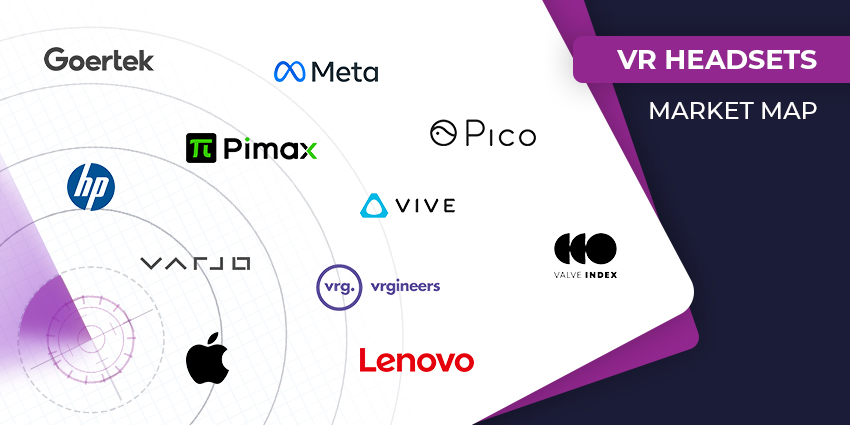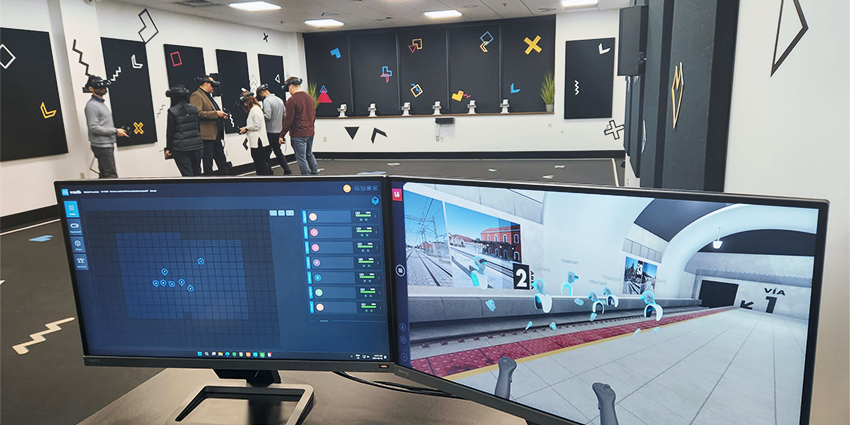As the world of work continues to evolve, more businesses than ever before are turning towards virtual reality to stay ahead of the curve…
Over the last 12 months, COVID-19 has accelerated digital transformation in the enterprise space at unprecedented levels. Many business owners who were once skeptical about investing in tools like collaboration platforms and video conferencing now depend on them every day to survive.
Yet, as much as these technologies have helped businesses overcome immediate problems caused by the pandemic, many are questioning whether they’ll be enough to keep remote teams engaged in the long term.
Already people are growing bored with corporate Zoom calls, and the demand for new tech that better replicates real-life interactions is growing by the day. This is why many business owners have already started to consider XR, or extended reality, as a long-term solution.
According to research, experts predict the AR and VR collaboration solution market will hit US$400 million by 2025, up from less than US$12 million in 2019, proving this tech will play a vital role in the future of enterprise comms. Despite the fact the VR collaboration marketplace is still in its infant stages, we’re already seeing lots of exciting developers moving into this space.
Here are a few of the biggest contenders in 2020:
Glue
Aimed mainly at the enterprise-level market, Glue offers a wide variety of fully immersive virtual environments where users can come together and collaborate on projects in real-time. Each user is represented by a 3D avatar which reflects their movements and gestures as they move around the virtual space with other team members.
Glue also offers an abundance of features like interactive freehand whiteboards, 3D models and images, post-it notes, and screen sharing that allow users to explore new ideas together in a creative environment. It is also highly secure and reliable, making this a great option for large organizations that deal with sensitive data.
Pricing is split into three tiers (team, organization, enterprise) with fees ranging from EUR 150 to EUR 500 per month.
Available on: Facebook Oculus Quest, PC-VR
Vive Sync
HTC Vive’s Vive Sync is a powerful VR collaboration platform built to take enterprise comms up to the next level (or ten).
Providing they have an HTC Vive headset, Vive Sync lets users synchronize files with OneDrive so that PowerPoints, PDFs, marketing videos, or 3D models can be synced and published easily within the virtual meeting space. It also allows users to use voice recognition to record notes, annotate with a 3D pen, take screenshots, and host meetings of up to 30 participants.
Right now, Vive Sync is going through a beta period where businesses of all sizes are invited to use the platform free of charge.
Available on: Only on HTC Vive, though this is likely to change in 2021
Spatial
Spatial harnesses virtual reality to transport users into a shared 3D space that, according to CEO, Anand Agarawala, is like “Zoom with holographic teleportation”. Before entering, users first scan a copy of their faces via webcam or phone camera which is then used to build realistic 3D avatars for the virtual environment.
The result is a fully immersive experience that replicates real-life interactions with impressive accuracy. Meanwhile, users can engage in virtual meetings of up to 30 people, using features like interactive whiteboards, 3D model presentations, live screen shares, and more.
While initially built for use on AR devices, Spatial is now available for free on a wide variety of VR and Smartphone devices, too. In addition to this, people who don’t yet have access to XR tech can still enter the virtual meeting space through their web browsers.
Available on: Facebook Oculus Quest, Microsoft HoloLens 2, Magic Leap, Android, iOS, Windows PC
MeetinVR
MeetinVR is shaping up to be a key player in the VR enterprise space. Combining both intricate, stylish design with high-end features and functionality, MeetinVR delivers a well-rounded next-generation remote collaboration tool that keeps users engaged during every interaction.
Features include diverse spaces designed to meet a wide variety of business needs, 3D model displays for immersive presentations, and interactive whiteboards for advanced brainstorming. MeetinVR also provides users with a virtual 3D tablet they can use to access tools quickly and co-ordinate meetings in real-time.
Pricing is fully flexible and will change depending on the amount of meetings organizations will host each month and how many users will participate in those meetings.
Available on: Facebook Oculus Quest, Rift, Varjo, HTC VIVE, WMR, and Windows PC
ENGAGE
In addition to standard VR collaboration, ENGAGE is also a powerful VR training and education platform that makes it easy for users to connect, create, and learn within a dedicated virtual environment. Predominantly aimed at education and big business, this platform is perfect for teachers, trainers, and corporate teams.
Features include support for up to 50 users within the same virtual room, 21 separate virtual locations, and 1200+ interactive 3D objects for use in real-time training sessions and business meetings. Users can also leverage integrated web browsing and desktop collaboration, and teachers/trainers can even host quizzes and forms to test student performance after each training session.
Right now, individual users can trial the ENGAGE Pro platform for free, while large organizations and educational institutes will have to contact the developers directly to arrange pricing based on size and usage.
Available on: Oculus Rift, VIVE Standard. VIVE PRO, HP Windows MR, ASUS Windows MR & Windows PC
How to choose your VR Collaboration Platform
With so many features to consider, it can be difficult to decide which VR collaboration platform is best for your business. To help make things easier, here are three important things to consider:
VR Headset Compatibility: you should first decide what VR headset you want to invest in, and make sure the platform you select is compatible with it. If you’re struggling to make this decision alone, you can check out our recent post on how to choose the best VR headset for your business.
Leverage Existing Investments: you should also make sure the platform you choose is compatible with your existing tools and workflows to keep disruption to a minimum.
Simplicity: choosing a VR collaboration platform that is easy to use is the best way to ensure fast user adoption and a better ROI.
In truth, there is no definitive answer when selecting your platform and the decision will depend on your business type and long-term goals for VR collaboration. The good news is that today you have more options than ever before and finding the right platform for your organization is only going to get easier as the market grows.







